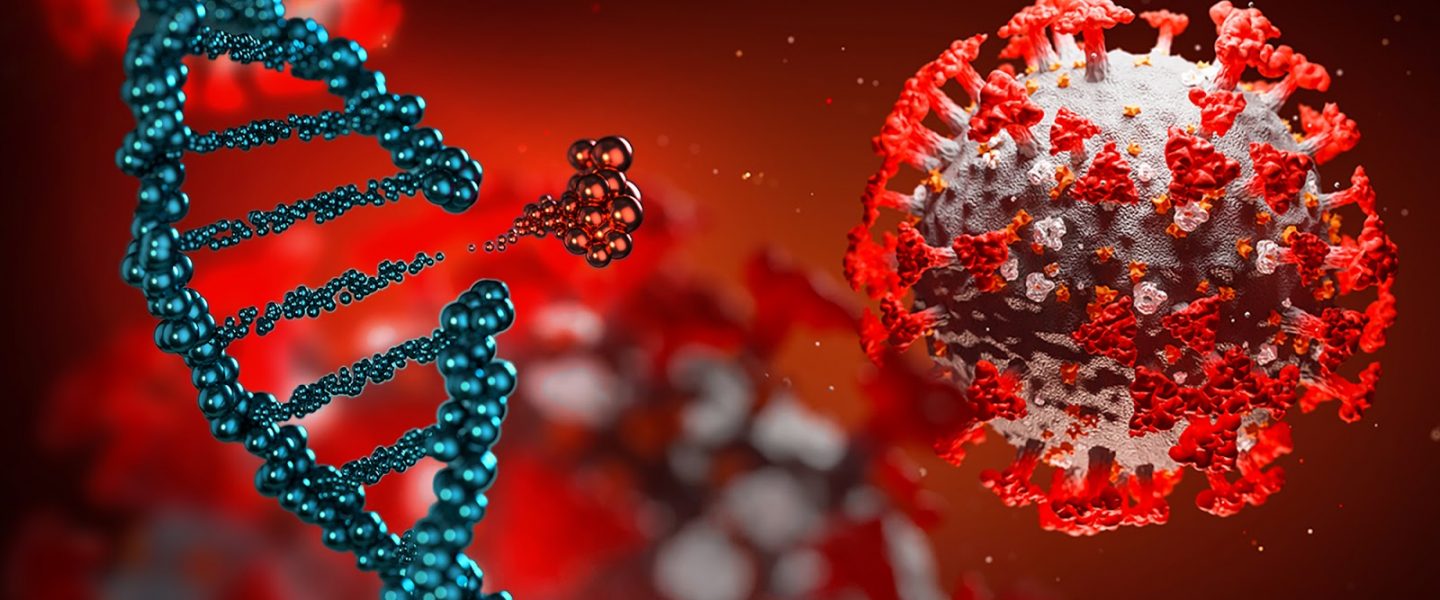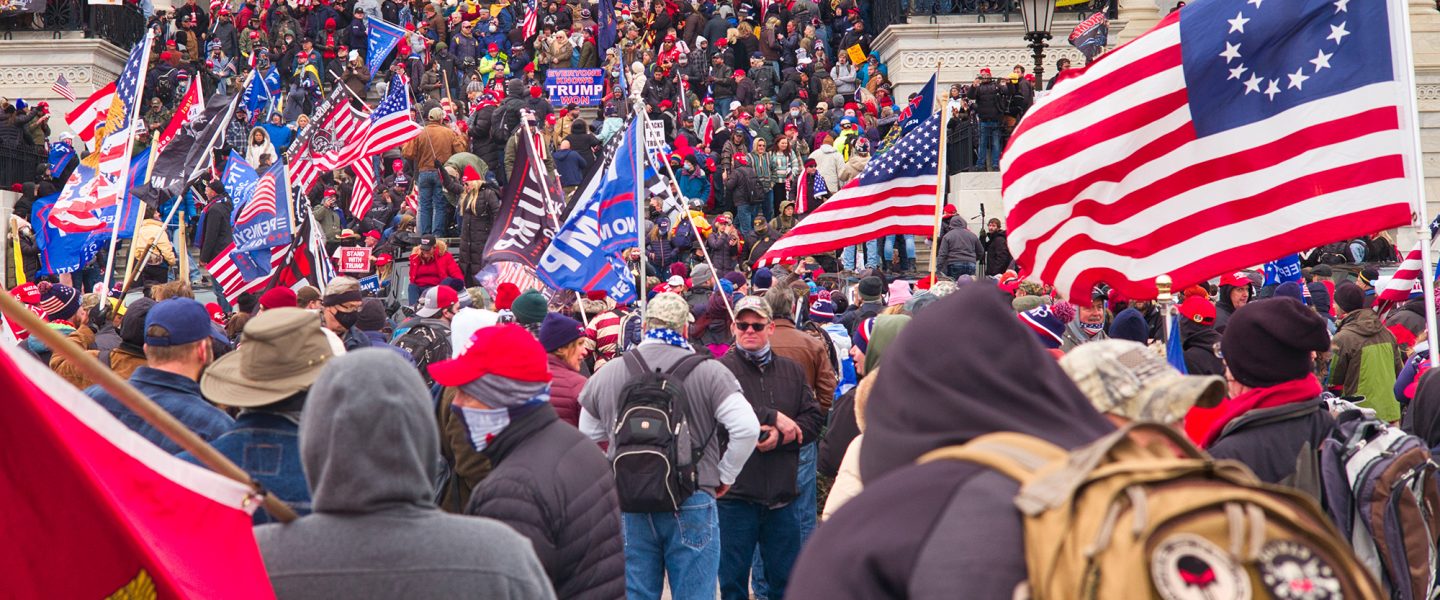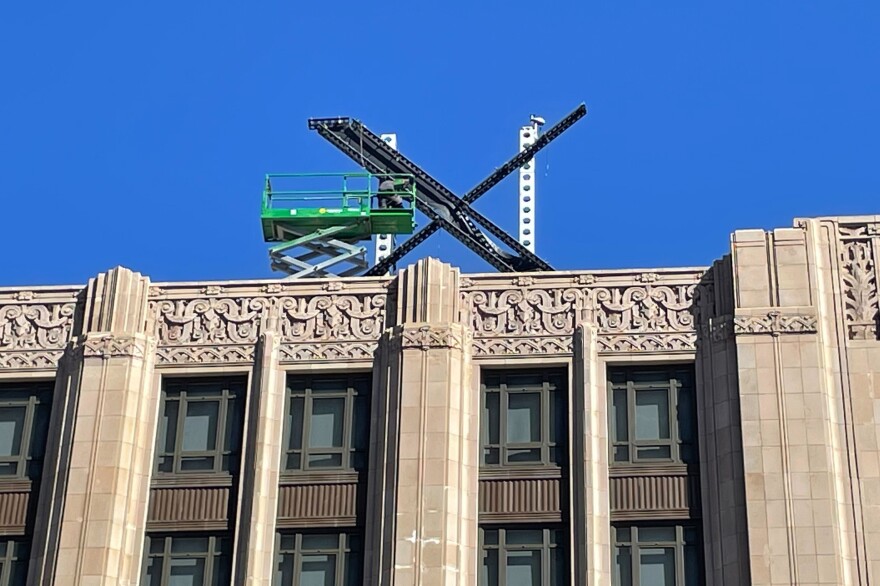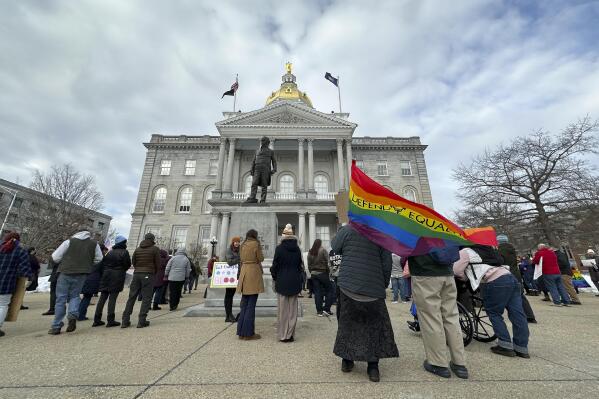As the 2024 election approaches, community organizations are preparing for what they expect to be a worsening onslaught of disinformation.

In this image provided by Sarah Shah, the advocacy group Indian American Impact, which runs the fact-checking site Desifacts.org, passes out Parle-G cookies with voting plan stickers at a Diwali even in Doylestown, Pa., on Oct. 23, 2022. Community organizations are gearing up for what they expect will be a worsening onslaught of disinformation targeting voters of color as the 2024 election approaches. (Sarah Shah via AP) | AP
By ASSOCIATED PRESS
07/29/2023
CHICAGO — Leading up to the 2020 election, Facebook ads targeting Latino and Asian American voters described Joe Biden as a communist. A local station claimed a Black Lives Matter co-founder practiced witchcraft. Doctored images showed dogs urinating on Donald Trump campaign posters.
None of these claims was true, but they scorched through social media sites that advocates say have fueled election misinformation in communities of color.
As the 2024 election approaches, community organizations are preparing for what they expect to be a worsening onslaught of disinformation targeting communities of color and immigrant communities. They say the tailored campaigns challenge assumptions of what kinds of voters are susceptible to election conspiracies and distrust in voting systems.
“They’re getting more complex, more sophisticated and spreading like wildfire,” said Sarah Shah, director of policy and community engagement at the advocacy group Indian American Impact, which runs the fact-checking site Desifacts.org. “ What we saw in 2020, unfortunately, will probably be fairly mild in comparison to what we will see in the months leading up to 2024.”
A growing subset of communities of color, especially immigrants for whom English is not their first language, are questioning the integrity of U.S. voting processes and subscribing to Trump’s lies of a stolen 2020 election, said Jenny Liu, mis/disinformation policy manager at the nonprofit Asian Americans Advancing Justice. Still, she said these communities are largely left out of conversations about misinformation.
“When you think of the typical consumer of a conspiracy theory, you think of someone who’s older, maybe from a rural area, maybe a white man,” she said. “You don’t think of Chinese Americans scrolling through WeChat. That’s why this narrative glosses over and erases a lot of the disinformation harms that many communities of colors face.”
Tailoring disinformation
In addition to general misinformation themes about voting machines and mail-in voting, groups are catering their messaging to communities of color, experts say.
For example, immigrants from authoritarian regimes in countries like Venezuela or who have lived through the Chinese Cultural Revolution may be “more vulnerable to misinformation claiming politicians are wanting to turn the U.S. into a Socialist state,” said Inga Trauthig, head of research for the Propaganda Research Lab at the Center for Media Engagement at the University of Texas at Austin. People from countries that have not recently had free and fair elections may have a preexisting distrust of elections and authority that may make them vulnerable to misinformation as well, Trauthig said.
Disinformation efforts often hinge on topics most important to each community, whether that is public safety, immigration, abortion, education, inflation or alleged extramarital affairs, said Laura Zommer, co-founder of the Spanish-language fact-checking group Factchequeado.
“It takes advantage of their very real fear and trauma from their experiences in their home countries,” Zommer said.
Other vulnerabilities include language barriers and a lack of knowledge of the U.S. media landscape and how to find credible U.S. news sources, several misinformation experts told The Associated Press. Many immigrants rely on translated content for voting information, leaving space for bad actors to inject misinformation.
“These tactics exploit information vacuums when there’s a lot of uncertainty around how these processes work, especially because a lot of election materials may not be translated in the languages our communities speak or be available in forms they are likely to access,” said Clara Jiménez Cruz, another co-founder of Factchequeado.
Misinformation can also arise from mistranslations. The Brookings Institute, a nonprofit think tank, found examples of mistranslations in Colombian, Cuban and Venezuelan WhatsApp groups, where “progressive” was translated to “progresista,” which carries “far-left connotations that are closer to the Spanish words ‘socialista’ and ‘comunista.’”
Disinformation, often in languages like Spanish, Mandarin or Hindi, flows onto social media apps like WhatsApp and WeChat heavily used by communities of color.
Minority communities that believe their views and perspectives aren’t represented by the mainstream are likely to “retreat into more private spaces” found on messaging apps or groups on social media sites like Facebook, Trauthig said.
“But disinformation also targets them on these platforms, even though it may feel to them to be that safer space,” she said.
Messages on WhatsApp are also encrypted and can’t be easily seen or traced by moderators or fact-checkers.
“As a result, messages on apps like WhatsApp often fly under the radar and are allowed to spread and spread, largely unchecked,” said Randy Abreu, policy counsel for the National Hispanic Media Coalition, which leads the Spanish Language Disinformation Coalition.
Abreu also raised concerns about Spanish YouTube channels and radio shows that are growing in popularity. He said the coalition is tracking more and more YouTube and radio personalities who are spreading misinformation in Spanish.
A 2022 report by the left-leaning watchdog group Media Matters tracked 40 Spanish-language YouTube videos spreading misinformation about U.S. elections. Many of these videos remained on the platform, despite violating YouTube election misinformation policy, the report said.
Disinformation and disenfranchising communities of color Amid changes in voting policies at state and local levels, advocates are sounding the alarm on how disinformation about voting in 2024 may target communities of color. Many of these efforts have surged as Asian American, Black and Latino communities have grown in political power, said María Teresa Kumar, founding president of the nonprofit advocacy group Voto Latino.
“Disinformation is, at its core, meant to be a sort of voter suppression tactic for communities of color,” she said. “It targets communities of color in a way that feeds into their already justifiable concerns that the system is stacked against them.”
The tactics also feed into a history “as old as the Jim Crow era of attempting to disenfranchise people of color, going back to voter intimidation and suppression efforts after the Civil Rights Act of 1866,” said Atiba Ellis, a professor of law at Case Western Reserve University School of Law.
While many of the same recycled claims around alleged fraud in the 2020 and 2022 elections are expected to resurface, experts say disinformation campaigns will likely be more sophisticated and granular in attempts to target specific groups of voters of color.
Trauthig also raised concerns about how layoffs and instability at social media platforms like Twitter may leave them less prepared to tackle misinformation in 2024. It also remains to be seen how new social media platforms like Threads will approach the threat of misinformation.
Changes in policies like WhatsApp launching a “Communities” function connecting multiple groups and expanding group chat sizes may also “have big implications for how quickly misinformation will spread on the platform,” she said.
In response to the mounting threat of misinformation, Indian American Impact is ramping up its fact-checking efforts through what the organization says is the first fact-checking website specifically for South Asian Americans.
Shah said the group is drawing inspiration from 2022 projects, including a voting toolkit using memes with Bollywood characters and passing out Parle-G crackers with voting information stickers at Indian grocery stores.
Cruz of Factchequeado is paying close attention to misinformation in swing states with significant Latino populations like Nevada and Arizona. And Liu of Asian Americans Advancing Justice is reviewing misinformation trends from previous elections to strategize about how to inoculate Asian American voters against them.
Still, they say there is more work to be done. Critics are urging social media companies to invest in content moderation and fact-checking in languages other than English.
Government and election officials should also make voting information more accessible to non-English speakers, organize media literacy trainings in community spaces and identify “trusted messengers” in communities of color to help approach trends in misinformation narratives, experts said.
“These are not monolithic groups,” Cruz said. “This disinformation is very specifically tailored to each of these communities and their fears. So we also need to be partnering with grassroots organizations in each of these communities to tailor our approaches. If we don’t take the time to do this work, our democracy is at stake.”








